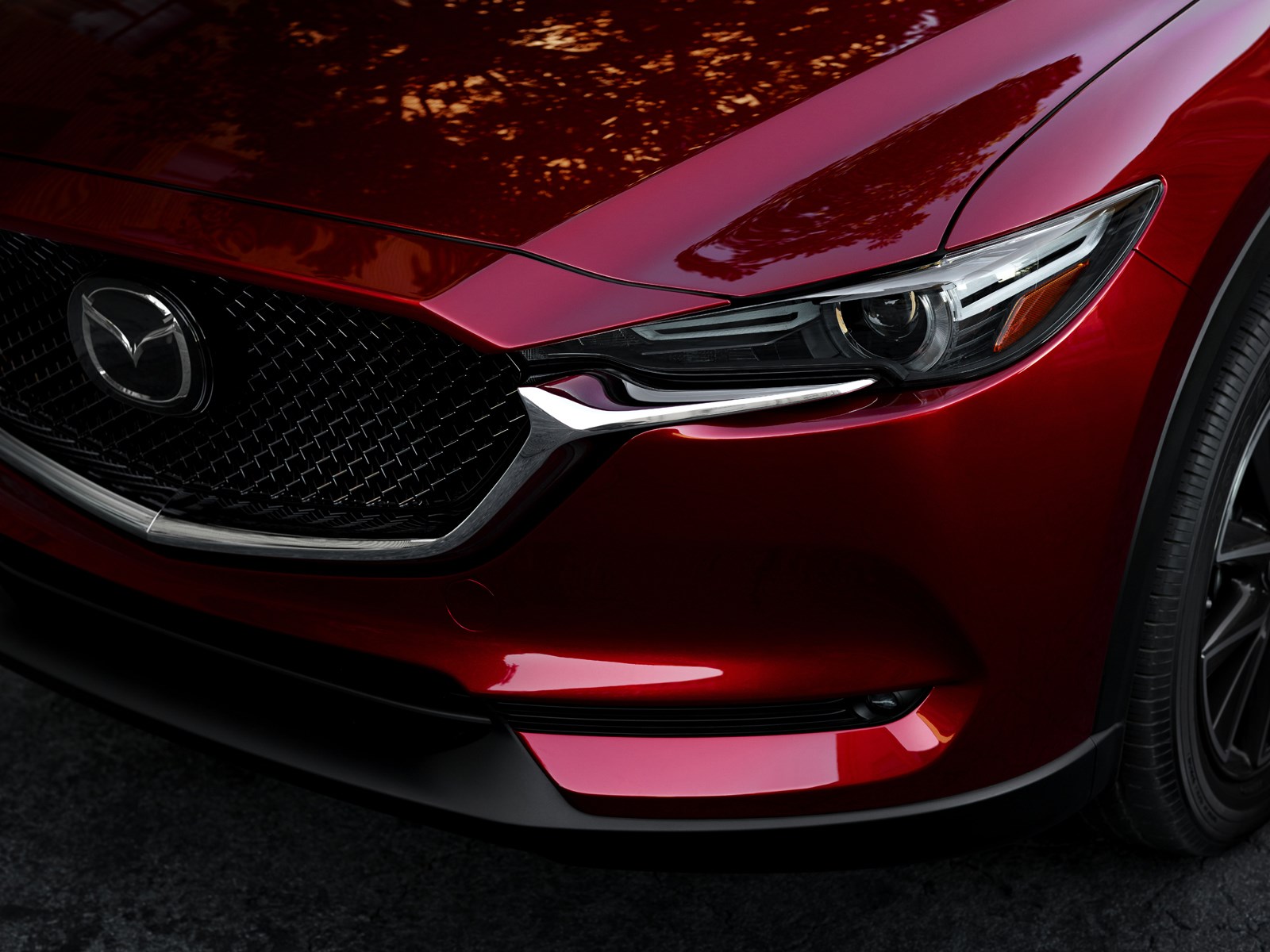For Mazda design chief Ikuo Maeda, the newly revealed CX-5 is more than just the second generation of the sports crossover, it's also an expansion of his now-famous design ethos, "Kodo".
The CX-5 was revealed at last week's Los Angeles motor show and goes on sale in Japan in February before heading to New Zealand in the second quarter.
Mazda New Zealand's managing director, Andrew Clearwater, said the company could not wait for the launch.
"The previous Mazda CX-5 has been an outstanding success in New Zealand and we expect the all-new CX-5 to continue the vehicles dominance of the mid-size SUV market in New Zealand," says Clearwater.
The all-new CX-5 stands out thanks to a new "floating" bonnet design and Mazda's new stunning colour, Soul Red Crystal.
The colour is an advanced version of Soul Red, as seen on the MX-5, and boasting 20 per cent greater colour saturation and 50 per cent more depth than Soul Red. The concave elements on the CX-5 reflect black, making it a stand out.
But it's not just the colour of the sports crossover that has changed.
The vehicle has a lower centre of gravity and 10mm wider front and rear tread, giving it a powerful stance. The A-pillars are positioned approximately 35mm rearward compared to the previous model.
Overseeing all model designs of Mazda vehicles, including the new CX-5, is Maeda-san. He became design chief for Mazda in 2009 and revolutionised the Japanese company with the "Kodo" design.

Launched in 2012, the CX-5 was the first vehicle to feature Mazda's SkyActiv technology and "Kodo".
Literally meaning, "Soul of motion", the design ethos is now in every Mazda, with the now famous grille and sculptured lines garnering plenty of international awards for the company.
But with the second-generation CX-5 just revealed, does this mean a second-generation "Kodo" style?
Maeda-san shakes his head. We are sitting at a table beside his company's stand at last week's LA motor show. The CX-5 is on stage next to us with spotlights focusing on it.
Seated beside him is the CX-5 head designer Shinichi Isayama, an interpreter and across the table from him are the Kiwi motoring editors.
"Kodo is the design philosophy so regarding the rest of the generations of cars, the Kodo philosophy won't be changing. We try to breath the life into the form that is Kodo. As a design, whatever form that comes out, the philosophy will stay the same," he replies.
"Of course the design theme will be different depending on the model."
The "Kodo" design has also changed the way the company creates vehicles. Instead of sketches of vehicles, 3D versions, then on to clay models, it's the opposite.
First comes working with clay modellers, whom Maeda-san credits as part of the design team.
"Designers are usually higher than clay modellers, the modeller will just listen to the designer," he said.
"But at Mazda, clay modellers explore the forms to start with and sometimes they will make suggestions to the designers."
Designers and the engineer department then work together, with emphasis now on including more safety technology into vehicles.
Incorporated in the new CX-5 will be i-Activsense, Active Driving Display that projects information on to the windshield, and the Mazda Connect car connectivity system.

The CX-5 also gains G-Vectoring Control, seen in the facelift Mazda3.
Maeda-san was asked if there were any elements from the first generation CX-5 that he wanted to rectify.
"The first approach was for the youth buyers and now it attracts the more mature customer," he said.
Mazda USA's design director, Julien Montousse, said the new CX-5 was "elegant yet restrained" at the press reveal.
"There is tension with dynamism in the design ... with the new front face a signature with excellent spread and depth," he says.
Montousse created the interior of the all-new Mazda CX-9, and his cues are in the new CX-5 with a driver cockpit and high-quality material.
The powertrain line-up comprises the SkyActiv-G 2- and 2.5-litre petrol, and SkyActiv-D 2.2-litre diesel engines.
At this stage, those are the only powertrains the company plans to have for the CX-5, despite calls for a 2.5-litre petrol turbo or an electric/hybrid pairing.
CX-5 programme manager, Masaya Kodama, was asked by the NZ motoring editors if a 2.5-litre turbo would fit in the CX-5.
"Technically speaking, yes it could fit," he replied, before his PR handler sitting next to him at our interview table gives him a "look".
"I'm saying too much," he says, laughing.
Driven told him that feedback from readers was that there is demand for it.
"We know there is high expectations of the 2.5-litre turbo," he says.
Kodama-san's job is to collaborate with the design and engineer teams to keep the project on time and budget.
"The passengers need to feel pleasure too [when in the SUV], is one of the key points of the development of the CX-5," he said. "You shouldn't feel fatigue from a long drive."
The night before the LA show, Mazda held a global press event, revealing the CX-5 and the RX-Vision, a concept coupe that shows the future of brand when it comes to sports cars, while harking back to the famous RX-7.
The RX-Vision was designed by Maeda-san but he has a more personal link to the car; his father is Matasaburo Maeda, head of design for Mazda in the 1970s and creator of the RX-7.
"So is the RX-Vision close to your heart?," Driven asks Maeda-san.
He nods, touching his chest.













